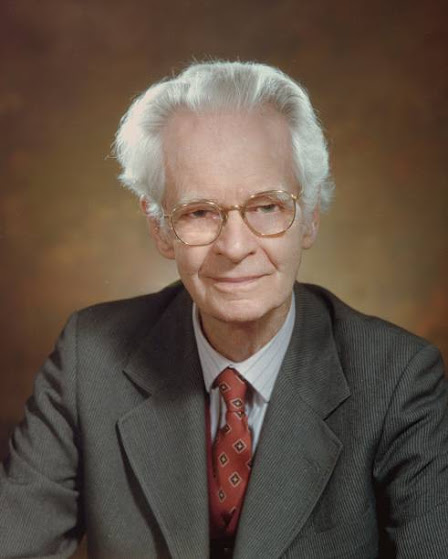 |
Chomsky theory of language acquisition |
The marvelous capacity that every individual has been the subject of investigation for centuries. The two important theories put forward in the study of first language acquisition are,
- Behavioristic theory
- Innate theory
The behavioristic theory has been presented by ''B.F Skinner'' in his classic work ''Verbal Behavior'' and the Innate theory given by ''Chomsky''.
Background of the theory
The behavioristic theory was first introduced in 1913 by the American psychologist ''John B. Watson''. Watson is credited with coining the term behaviorism. Watson's view was largely influenced by the research of Russian psychologist ''Ivan P. Pavlov'' during the early 1900s. The most influential version of this theory is put forward by ''B.F Skinner'' in 1957. His version of behaviorism is best known as ''Radical Behaviorism''.
Types of behavioral learning
There are two types of behavioral learning
- Classical conditioning
- Operant conditioning
1.Classical conditioning:
This conditioning was first described by the Russian psychologist Ivan Pavlov in 1903 through his experiment on dogs. Pavlov presented dogs with food to examine their salivary response. He rang a bell just before serving the food. At first, the dog did not salivate until the food is served. However, when the bell was rung at repeated feedings the sound of the bell alone caused the dogs to salivate. Thus, in classical conditioning, an unconditioned stimulus(food) is paired with a conditioned stimulus (bell).
2.Operant conditioning:
Expanding on Watson's basic stimulus-response model, skinner developed a more comprehensive view of conditioning, known as operant conditioning. Skinner's model was based on the premise that effective language behavior consists of producing responses to the correct stimulus. When a response is followed by a reinforcer then it is conditioned to occur again. The operant condition can be summarized as
Reinforcement and punishment are the core ideas of operant conditioning.
1.Reinforcement:
A reinforcer is a stimulus that increases the frequency of a response it follows;
It can be classified into the following types
Positive reinforcement:
It is the encouragement of the desired response by a pleasant stimulus.
For example;
If a child produces an utterance that is appropriate to the situation, the mother will be rewarded him /her with some sign of approval. This approval or reward will encourage him to repeat the same response to the same situation.
Negative reinforcement:
It is a discouragement of an undesired response by an unpleasant stimulus.
For example;
If a child produces an utterance that is inappropriate to the situation, the mother will not reward him /her. Thus, the child will not repeat the same response to the same situation.
2.Punishment:
Punishment is used to erase undesirable behaviors by presenting a distressing stimulus when the behavior occurs
Reinforcement can come from different sources. The mother is the primary source of reinforcement because she has to take care of the child almost all the time
Final thought:
The behavioristic theory has also been criticized by many critics. Chomsky launched the bitterest attack on him. He considers skinner's theory inappropriate for explaining the generative aspect of the language. According to him, a child cannot learn something only by imitation and reward. He says a child is born with a mental capacity to establish underlying rules from the jumble of language which is exposed
This conditioning was first described by the Russian psychologist Ivan Pavlov in 1903 through his experiment on dogs. Pavlov presented dogs with food to examine their salivary response. He rang a bell just before serving the food. At first, the dog did not salivate until the food is served. However, when the bell was rung at repeated feedings the sound of the bell alone caused the dogs to salivate. Thus, in classical conditioning, an unconditioned stimulus(food) is paired with a conditioned stimulus (bell).
2.Operant conditioning:
Expanding on Watson's basic stimulus-response model, skinner developed a more comprehensive view of conditioning, known as operant conditioning. Skinner's model was based on the premise that effective language behavior consists of producing responses to the correct stimulus. When a response is followed by a reinforcer then it is conditioned to occur again. The operant condition can be summarized as
Stimulus-response-reinforcement-repetition
Reinforcement and punishment are the core ideas of operant conditioning.
1.Reinforcement:
A reinforcer is a stimulus that increases the frequency of a response it follows;
The act of following response with a reinforcer is called reinforcement.
It can be classified into the following types
- Positive reinforcement
- Negative reinforcement
Positive reinforcement:
It is the encouragement of the desired response by a pleasant stimulus.
For example;
If a child produces an utterance that is appropriate to the situation, the mother will be rewarded him /her with some sign of approval. This approval or reward will encourage him to repeat the same response to the same situation.
Negative reinforcement:
It is a discouragement of an undesired response by an unpleasant stimulus.
For example;
If a child produces an utterance that is inappropriate to the situation, the mother will not reward him /her. Thus, the child will not repeat the same response to the same situation.
2.Punishment:
Punishment is used to erase undesirable behaviors by presenting a distressing stimulus when the behavior occurs
Reinforcement can come from different sources. The mother is the primary source of reinforcement because she has to take care of the child almost all the time
Final thought:
The behavioristic theory has also been criticized by many critics. Chomsky launched the bitterest attack on him. He considers skinner's theory inappropriate for explaining the generative aspect of the language. According to him, a child cannot learn something only by imitation and reward. He says a child is born with a mental capacity to establish underlying rules from the jumble of language which is exposed
Good 👍
ReplyDeletegreat
ReplyDelete